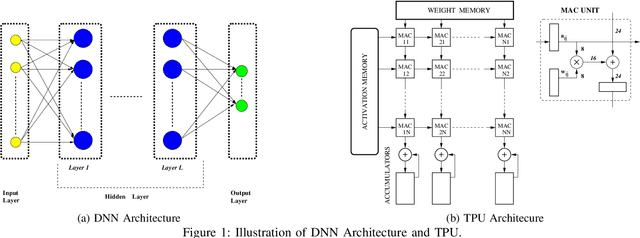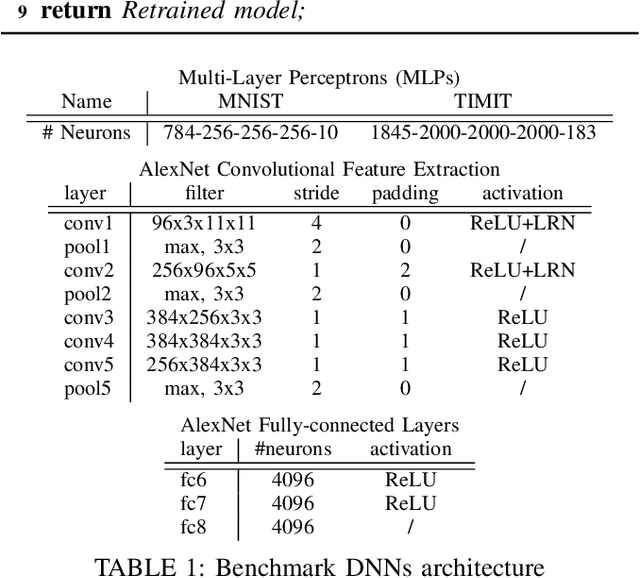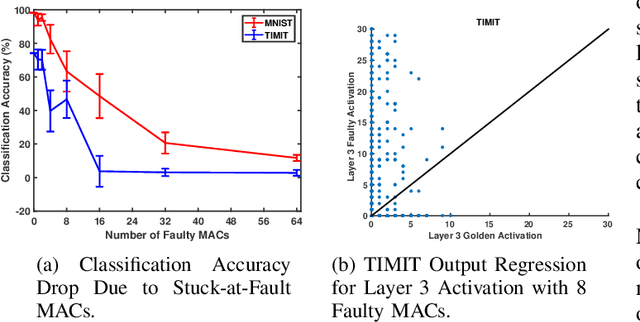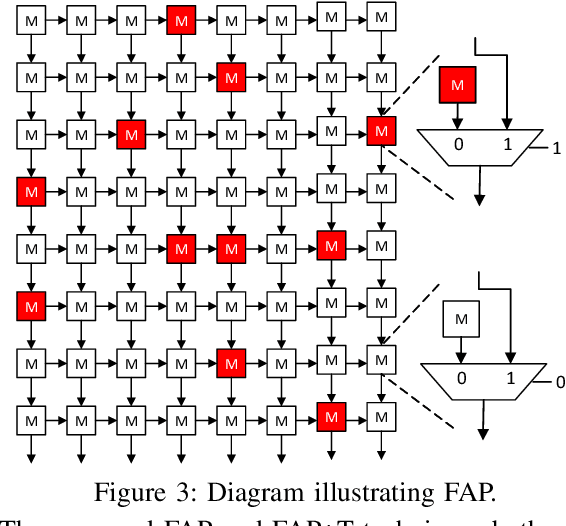Analyzing and Mitigating the Impact of Permanent Faults on a Systolic Array Based Neural Network Accelerator
Paper and Code
Feb 17, 2018



Due to their growing popularity and computational cost, deep neural networks (DNNs) are being targeted for hardware acceleration. A popular architecture for DNN acceleration, adopted by the Google Tensor Processing Unit (TPU), utilizes a systolic array based matrix multiplication unit at its core. This paper deals with the design of fault-tolerant, systolic array based DNN accelerators for high defect rate technologies. To this end, we empirically show that the classification accuracy of a baseline TPU drops significantly even at extremely low fault rates (as low as $0.006\%$). We then propose two novel strategies, fault-aware pruning (FAP) and fault-aware pruning+retraining (FAP+T), that enable the TPU to operate at fault rates of up to $50\%$, with negligible drop in classification accuracy (as low as $0.1\%$) and no run-time performance overhead. The FAP+T does introduce a one-time retraining penalty per TPU chip before it is deployed, but we propose optimizations that reduce this one-time penalty to under 12 minutes. The penalty is then amortized over the entire lifetime of the TPU's operation.
 Add to Chrome
Add to Chrome Add to Firefox
Add to Firefox Add to Edge
Add to Edge